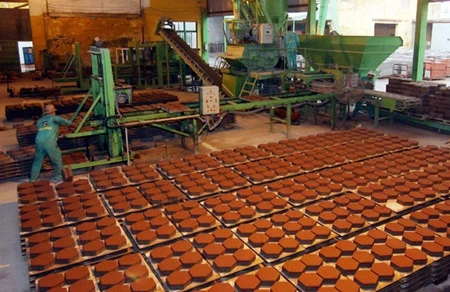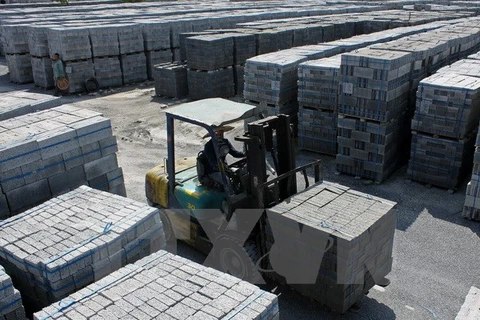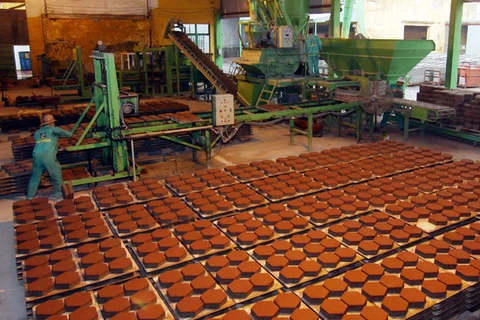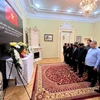Hanoi (VNA) – Unbaked construction materials are targeted to account for 30-40 percent of all materials used for building by 2020, according to a circular that has been approved by the Government.
The move is part of the nation’s attempts to erase traditional fired brick production facilities across the country towards boosting the production and consumption of more environmentally friendly building materials.
Since 2008, the Government and the Ministry of Construction have continued to issue legal documents on researching, producing, and using unburned construction materials. Any projects producing non-fired materials were eligible for support between 2009 and 2015.
In 2014, the Government approved a master plan for the development of construction materials by 2020. A programme on enhancing the production and use of non-fired bricks in Vietnam by the Ministry of Science and Technology and the Ministry of Construction became a key part of the plan.
Vietnam consumes an average 20 billion bricks on its construction sites each year, which is expected to rise to 42 billion by 2020, meaning that the country will need some 30,000 hectares of clay as input materials. Thus, without the move towards non-fired bricks, the environment will face severe consequences with heavy pollution.
Although unbaked bricks are more durable and water resistant than the baked version, Vietnamese consumers still prefer the traditional ones as they are cheaper.
According to experts, the source of clay for producing burned bricks in Vietnam is cheap and readily available, making it tough for non-fired bricks to compete on the construction market.
In addition, the use of non-fired bricks faces stricter technical requirement. Most builders are familiar with burned clay bricks and simple tools, whereas non-fired ones require specialised construction tools.
According to Head of the Construction Material Department under the Ministry of Construction Pham Van Bac, increasing natural resource-use tax is among the measures being implemented to help reduce the dominance of burnt clay bricks.
The ministry is working to complete and issue technical standards and production norms for non-fired bricks, he said, given that it is expected to facilitate the development of this green material.
Unburned bricks have been sold like hot cakes for state-owned projects, said Tran Duy Phuc, Marketing Director at Thanh Phuc Mechanical and Construction Material JSC.
In a bid to broaden the market share of non-fired bricks, Phuc suggested an increase in the production of high quality products and rational selling prices.
Figures from the Ministry of Construction show that there are 41 businesses researching, designing, manufacturing, and supplying equipment on non-fired construction materials nationwide.
The output of non-fired bricks is about 6.8 billion cubes, accounting for about 26 percent of the total output of building materials. Meanwhile, the output of burned clay bricks was 18 billion of cubes.-VNA
VNA
























